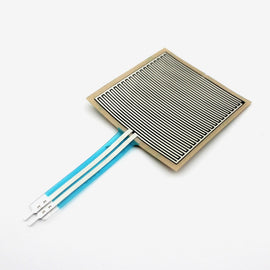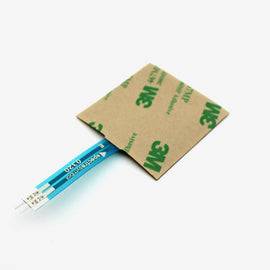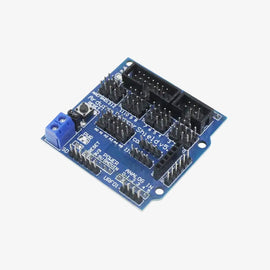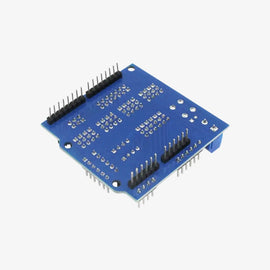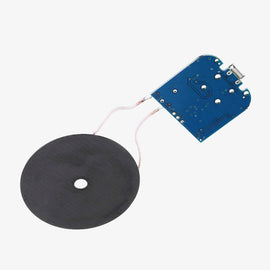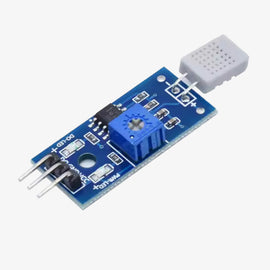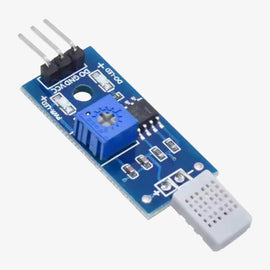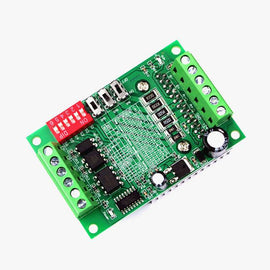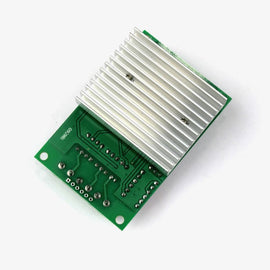From kitchen scales to industrial weighing systems, load cells are essential components for measuring weight. In this project, we will build a simple weighing machine using an Arduino and a load cell. This project is practical for various applications where weight measurement is needed, and it's a great way to understand the basics of load cell operation and interfacing with microcontrollers like arduino.
In this project, we will cover the basic concept of interfacing a load cell with an Arduino, calibrating the system, and displaying the weight on an LCD. Below, you can see a working setup of our project, which we will be building in this project.
Components required
- Arduino UNO
- Load Cell
- HX711 Load Cell Amplifier
- 16x2 LCD screen
- Potentiometer
- Jumper Wires
- Breadboard
- A strong base of any material
About HX711
The HX711 module is an ADC designed to interface with the load cell and convert its analog signals into digital data that can be read by a microcontroller like the Arduino. The pins on the HX711 module include:
- VCC: Power supply for the HX711 module, typically connected to the 5V output of the Arduino.
- GND: Ground connection, connected to the GND pin on the Arduino.
- DT (DOUT): Data output pin, which transmits the digital data to the Arduino. Connect this to a digital input pin on the Arduino (e.g., digital pin 3).
- SCK (SCLK): Serial clock pin, used to synchronize data transmission between the HX711 and the Arduino. Connect this to another digital input pin on the Arduino (e.g., digital pin 2).
Weighing Machine Circuit Diagram

Schematic Diagram

Connections
1. Connect the Load Cell to HX711:
- Red Wire (E+ or VCC): Connect to E+ on the HX711 module.
- Black Wire (E- or GND): Connect to E- on the HX711 module.
- White Wire (A- or OUT- or S-): Connect to A- on the HX711 module.
- Green Wire (A+ or OUT+ or S+): Connect to A+ on the HX711 module.
2. Connect HX711 to Arduino:
- VCC on HX711: Connect to 5V on the Arduino.
- GND on HX711: Connect to GND on the Arduino.
- DT (or DOUT) on HX711: Connect to digital pin 3 on Arduino.
- SCK (or SCL) on HX711: Connect to digital pin 2 on Arduino.
3. Connect the 1602 LCD to Arduino:
- VSS (Pin 1): Connect to GND on Arduino.
- VDD (Pin 2): Connect to 5V on Arduino.
- V0 (Pin 3): Connect to the wiper (middle pin) of a 10kΩ potentiometer.
- RS (Pin 4): Connect to digital pin 7 on Arduino.
- RW (Pin 5): Connect to GND on Arduino.
- E (Pin 6): Connect to digital pin 8 on Arduino.
- D4 (Pin 11): Connect to digital pin 9 on Arduino.
- D5 (Pin 12): Connect to digital pin 10 on Arduino.
- D6 (Pin 13): Connect to digital pin 11 on Arduino.
- D7 (Pin 14): Connect to digital pin 12 on Arduino.
- BLA (Pin 15): Connect to 5V through Arduino.
- BLK (Pin 16): Connect to GND on Arduino.
(You can also use the I2C module for more efficient connection with the LCD.)
4. Potentiometer Connections:
- Pin 1: Connect to 5V on Arduino.
- Pin 2 (wiper): Connect to V0 (Pin 3) of the LCD.
- Pin 3: Connect to GND on Arduino.

Note: The load cell to a stable platform or mounting structure. This is crucial for accurate measurements. The load cell should be mounted in a way that it can measure weight applied to it evenly.
Weighing Machine with HX711 Load Cell - Arduino Code Explanation
In this project, we use the Arduino IDE to write code for an weighing machine using an HX711 load cell and a LiquidCrystal display. The code aims to initialize the scale, calibrate it using a known weight, and continuously display the weight measurements on both the serial monitor and the LCD.
First, we include the necessary header files for the LCD and the HX711 load cell. The LiquidCrystal.h library is used to control the 16x2 LCD display, and the HX711.h library is used to interface with the HX711 load cell amplifier. These libraries provide the necessary functions to interact with the hardware components.
#include <LiquidCrystal.h>
#include <HX711.h>
We declare the pins for the load cell and the LCD, and initialize the HX711 object and the LiquidCrystal object. The LOADCELL_DOUT_PIN and LOADCELL_SCK_PIN are connected to the data and clock pins of the HX711 module, respectively. The LCD pins (RS, E, D4, D5, D6, D7) are connected to the respective pins on the Arduino.
const int LOADCELL_DOUT_PIN = 2;
const int LOADCELL_SCK_PIN = 3;
HX711 scale;
LiquidCrystal lcd(7, 8, 9, 10, 11, 12); // RS, E, D4, D5, D6, D7
In the setup function, we initialize serial communication at 9600 baud rate, start the scale, and set up the LCD. The scale is tared to zero out any existing weight, and a known weight is used for calibration. Multiple readings are taken to improve calibration accuracy, and the calibration factor is calculated and set.
void setup() {
Serial.begin(9600);
scale.begin(LOADCELL_DOUT_PIN, LOADCELL_SCK_PIN);
lcd.begin(16, 2);
Serial.println("Initializing the scale...");
lcd.print("Init scale...");
Serial.println("Taring...");
lcd.setCursor(0, 1);
lcd.print("Taring...");
scale.set_scale();
scale.tare();
Serial.println("Place a known weight on the scale.");
lcd.clear();
lcd.print("Add weight...");
delay(5000); // Wait for user to place the weight
long sumReading = 0;
const int numReadings = 10; // Take multiple readings for more accurate calibration
for (int i = 0; i < numReadings; i++) {
sumReading += scale.read();
delay(100);
}
long reading = sumReading / numReadings;
Serial.print("Initial reading: ");
Serial.println(reading);
float known_weight = 1.0; // Replace this with the actual known weight in kg
float calibration_factor = reading / known_weight;
scale.set_scale(calibration_factor);
Serial.print("Calibration factor: ");
Serial.println(calibration_factor);
lcd.clear();
lcd.print("Cal factor:");
lcd.setCursor(0, 1);
lcd.print(calibration_factor, 2); // Show with 2 decimal places
}
In the loop function, we continuously read weight data from the load cell and display it on the serial monitor and LCD. If the HX711 is not detected, an error message is displayed. The weight is updated every second to provide real-time information.
void loop() {
if (scale.is_ready()) {
float weight = scale.get_units(10);
Serial.print("Weight: ");
Serial.print(weight, 2);
Serial.println(" kg");
lcd.clear();
lcd.setCursor(0, 0);
lcd.print("Weight: ");
lcd.print(weight, 2);
lcd.print(" kg");
} else {
Serial.println("HX711 not found.");
lcd.clear();
lcd.setCursor(0, 0);
lcd.print("HX711 not found");
}
delay(1000); // Update every second
}
Working
In the beginning, the Arduino-based weighing machine initializes and prepares the load cell for accurate weight measurement. Once powered on, the system performs a calibration routine to set the zero point and adjust the calibration factor based on a known weight. The calibration factor is crucial for converting the raw sensor data into meaningful weight readings. After calibration, the system continuously reads the weight data from the load cell through the HX711 amplifier and processes it with the Arduino.
The measured weight is then displayed on the LCD (16x2) screen in real-time. To verify the accuracy of the weighing machine, you can place known weights on the scale and compare the displayed values with the actual weights. As shown in the video below, placing various known weights on the load cell will demonstrate the machine's ability to provide accurate measurements. If the displayed weight corresponds closely to the known weight, the system is functioning correctly. If there is a discrepancy, recalibration may be necessary to ensure accurate measurements.
For optimal performance, ensure the load cell is properly mounted and the weighing surface is level. Any deviation in the setup may affect the accuracy of the readings. By regularly calibrating the system and following these guidelines, you can maintain a reliable and precise digital weighing machine.
Arduino Load Cell Weighing Machine Code
#include <LiquidCrystal.h>
#include <HX711.h>
const int LOADCELL_DOUT_PIN = 2;
const int LOADCELL_SCK_PIN = 3;
HX711 scale;
LiquidCrystal lcd(7, 8, 9, 10, 11, 12); // RS, E, D4, D5, D6, D7
void setup() {
Serial.begin(9600);
scale.begin(LOADCELL_DOUT_PIN, LOADCELL_SCK_PIN);
lcd.begin(16, 2);
Serial.println("Initializing the scale...");
lcd.print("Init scale...");
Serial.println("Taring...");
lcd.setCursor(0, 1);
lcd.print("Taring...");
scale.set_scale();
scale.tare();
Serial.println("Place a known weight on the scale.");
lcd.clear();
lcd.print("Add weight...");
delay(5000); // Wait for user to place the weight
long sumReading = 0;
const int numReadings = 10; // Take multiple readings for more accurate calibration
for (int i = 0; i < numReadings; i++) {
sumReading += scale.read();
delay(100);
}
long reading = sumReading / numReadings;
Serial.print("Initial reading: ");
Serial.println(reading);
float known_weight = 1.0; // Replace this with the actual known weight in kg
float calibration_factor = reading / known_weight;
scale.set_scale(calibration_factor);
Serial.print("Calibration factor: ");
Serial.println(calibration_factor);
lcd.clear();
lcd.print("Cal factor:");
lcd.setCursor(0, 1);
lcd.print(calibration_factor, 2); // Show with 2 decimal places
}
void loop() {
if (scale.is_ready()) {
float weight = scale.get_units(10);
Serial.print("Weight: ");
Serial.print(weight, 2);
Serial.println(" kg");
lcd.clear();
lcd.setCursor(0, 0);
lcd.print("Weight: ");
lcd.print(weight, 2);
lcd.print(" kg");
} else {
Serial.println("HX711 not found.");
lcd.clear();
lcd.setCursor(0, 0);
lcd.print("HX711 not found");
}
delay(1000); // Update every second
}

